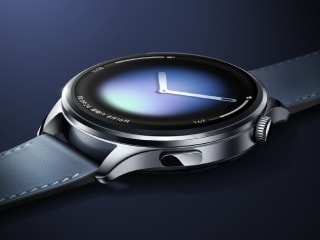- Home
- Mobiles
- Mobiles News
- Asus ROG Phone 3 Has a Hidden 160Hz Refresh Rate Option: Report
Asus ROG Phone 3 Has a Hidden 160Hz Refresh Rate Option: Report
Asus has confirmed the 160Hz display mode but says it is only for internal testing purposes.

Asus ROG Phone 3 has ultrasonic sensors for the AirTrigger 3 and grip press features
Asus ROG Phone 3 has a secret 160Hz refresh rate that can be unlocked using the Android Debug Bridge (ADB) command-line tool. Launched in India last week, the flagship gaming phone comes with a refresh rate of 144Hz on paper. The Taiwanese tech giant has also confirmed the existence of the advanced refresh rate option, which it says is only meant for internal testing and not for end-users. The phone's display, however, has not been calibrated to suit a refresh rate of 160Hz.
XDA Developers found the hidden 160Hz refresh option, sharing steps on how to unlock it. It says that the mode can only be activated by using the ADB PC app. Once there, the user needs to you run a command from a prompt or terminal window, “adb shell setprop debug.vendor.asus.fps.eng 1.” Following this, when the phone is rebooted, the 160Hz refresh rate option should start appearing in the display settings.
The report also highlighted that this mode is unfinished, and the display hasn't been calibrated to suit. It essentially means that you can use the display at 160Hz but you may not get the smoothness you wish to achieve.
Asus confirmed the development, and told Engadget, “The 160Hz refresh rate is only for our internal testing and ASUS has not made this part of the official specifications of the device.” The phone will be available for purchase from August 6 in India.
Asus ROG Phone 3 Specifications
The Asus ROG Phone 3 sports a 6.59-inch full-HD+ AMOLED display with 1,080x2,340 pixels resolution, 19.5:9 aspect ratio, 144Hz refresh rate, and HDR10+ support. The display is protected by a 2.5D Corning Gorilla Glass 6, and it has a TUV Low Blue Light solution to protect the eyes. The phone has an in-display fingerprint sensor, and ultrasonic sensors for the AirTrigger 3 and grip press features. The phone runs on Android 10 with ROG UI on top.
The smartphone is powered by a Qualcomm Snapdragon 865+ mobile platform, and is coupled with Adreno 650 GPU, up to 12GB LPDDR5 RAM and up to 256GB of onboard UFS 3.1 storage. The ROG Phone 3 has three rear cameras which include a 64-megapixel primary sensor, a 13-megapixel sensor with ultra-wide-angle lens, and a third 5-megapixel macro camera. Customers get a 24-megapixel selfie camera. Further, the phone features two speakers powered by ROG GameFX and Dirac HD Sound technologies. It houses a 6,000mAh battery with 30W fast charging support.
Is Redmi Note 9 the perfect successor to Redmi Note 8? We discussed this on Orbital, our weekly technology podcast, which you can subscribe to via Apple Podcasts, Google Podcasts, or RSS, download the episode, or just hit the play button below.
Get your daily dose of tech news, reviews, and insights, in under 80 characters on Gadgets 360 Turbo. Connect with fellow tech lovers on our Forum. Follow us on X, Facebook, WhatsApp, Threads and Google News for instant updates. Catch all the action on our YouTube channel.
Related Stories
- Samsung Galaxy Unpacked 2025
- ChatGPT
- Redmi Note 14 Pro+
- iPhone 16
- Apple Vision Pro
- Oneplus 12
- OnePlus Nord CE 3 Lite 5G
- iPhone 13
- Xiaomi 14 Pro
- Oppo Find N3
- Tecno Spark Go (2023)
- Realme V30
- Best Phones Under 25000
- Samsung Galaxy S24 Series
- Cryptocurrency
- iQoo 12
- Samsung Galaxy S24 Ultra
- Giottus
- Samsung Galaxy Z Flip 5
- Apple 'Scary Fast'
- Housefull 5
- GoPro Hero 12 Black Review
- Invincible Season 2
- JioGlass
- HD Ready TV
- Laptop Under 50000
- Smartwatch Under 10000
- Latest Mobile Phones
- Compare Phones
- OnePlus 15R
- Realme Narzo 90x 5G
- Realme Narzo 90 5G
- Vivo S50 Pro Mini
- Vivo S50
- OPPO Reno 15c
- Redmi Note 15 5G
- Redmi Note 15 Pro 5G
- Asus ProArt P16
- MacBook Pro 14-inch (M5, 2025)
- Infinix Xpad Edge
- OnePlus Pad Go 2
- OnePlus Watch Lite
- Just Corseca Skywatch Pro
- Acerpure Nitro Z Series 100-inch QLED TV
- Samsung 43 Inch LED Ultra HD (4K) Smart TV (UA43UE81AFULXL)
- Asus ROG Ally
- Nintendo Switch Lite
- Haier 1.6 Ton 5 Star Inverter Split AC (HSU19G-MZAID5BN-INV)
- Haier 1.6 Ton 5 Star Inverter Split AC (HSU19G-MZAIM5BN-INV)

















